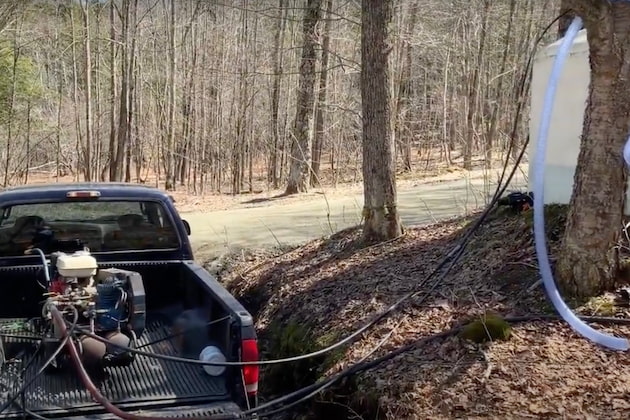Tapping & Tubing
Vermont sugarmaker offers tips on tubing cleaning
Tried and true method popular on YouTube
By PETER GREGG | NOVEMBER 3, 2023
SOUTH WOODSTOCK, Vt.—One of the biggest debates in maple is over the best method for cleaning tubing, or even bothering to clean it at all.
At 1,200-tap Top Acres Farm in South Woodstock, Vt. sugarmaker Mary McCuaig has developed what she says is a tried and true method.
"We use a weaker chlorine solution and begin cleaning as soon as the season ends," she told The Maple News.
"This method has allowed us to avoid replacing spouts and droplines annually and still keep yields high," McCuaig said.
"We average over half gallon of syrup per tap, and our sap is clean, starting with the first sap run," she said.
McCuaig has posted three YouTube videos explaining her method under her YouTube channel- marymccuaig3249.
Basically, McCuaig said she has improved on the method most producers used 30 years ago.
McCuaig uses a tubing washing machine from Small Brothers USA and to pump hundreds of gallons of a weak chlorine solution up the mainlines and sidelines.
The machine mixes air with the water to create a turbulence which cleans better.
The main methods she uses are as follows:
1. She uses a weaker chlorine solution—one gallon of food grade bleach to 600 -1,000 gallons of water.
2. She removes spouts from the top, doing one mainline at a time by using valves to direct the water.
3. She leaves the droplines down so the water drains out.
4. She goes back into the woods a couple weeks later to plug off the spouts.
"We do not have trouble with squirrels chewing the lines," McCuaig said.
"I believe this is because we use a weaker chlorine solution and because we let the lines drain," she said.

































